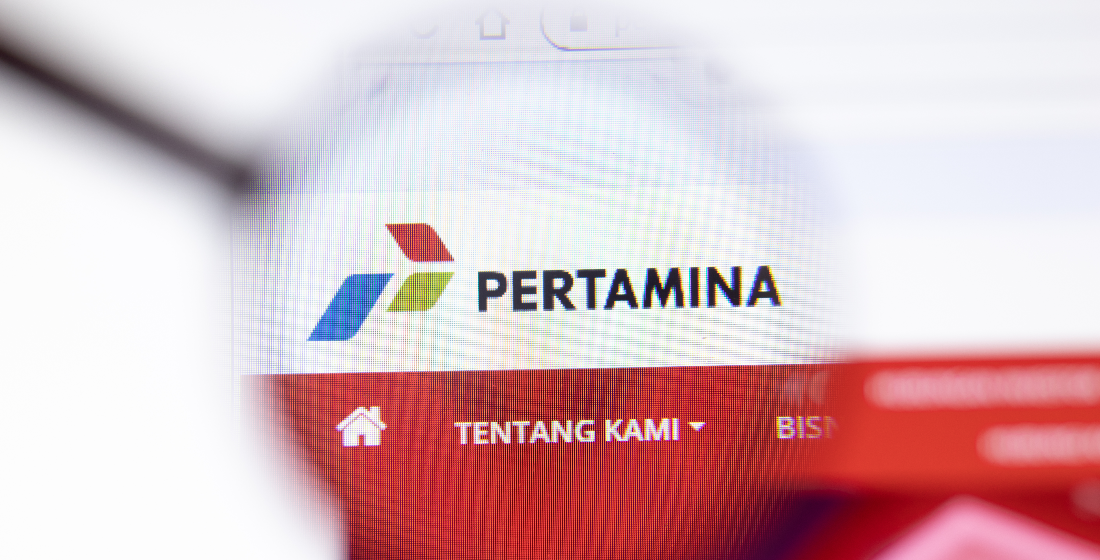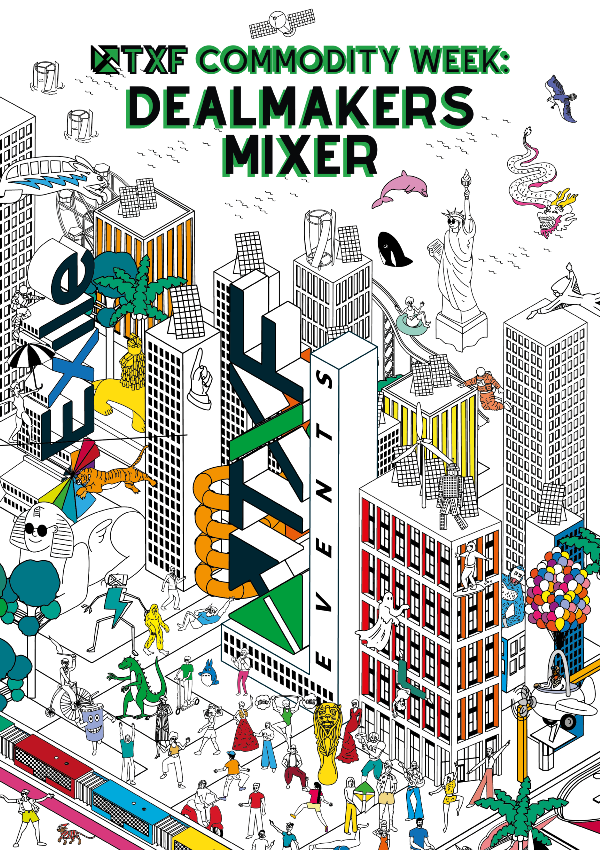Shop talk: ClearDox on the digital transformation of trade
TXF spoke to Addison Armstrong, head of sales and marketing at ClearDox, an SaaS platform that provides data management and digital transformation solutions for commodity corporates and financiers, designed by commodities practitioners.

Initially established in association with Freepoint Commodities, ClearDox has now launched as a standalone company, subsequently having signed Gulf Oil as its first client. Armstrong outlines how ClearDox's technology mitigates issues posed by the paperwork-heavy commodity trade finance industry; the firm’s work-in-progress collaboration with leading trade banks with operations in Singapore to address issues of fraud; and what still needs to change in order for digitisation to be more widely accepted in the sector.
TXF: Could you tell us a bit about ClearDox and how it smooths over the challenges posed by the lengthy paper-based processes typically used in the commodities industry?
Addison Armstrong (AA): The genesis of the technology ultimately grew out of Freepoint’s experiences. Firstly in the upstream oil business in North Dakota, where they were hiring dozens of trucking companies to go to wellheads, pick up oil and truck it to a transload facility where it was then put on to railcars.
This was in 2012; so the ClearDox technology has been built over eight years of continuous use and improvement. The problem that Freepoint was trying to solve when they began to develop the technology was that they were receiving file boxes full of hand-written documents, field tickets and invoices and they needed to reconcile all of that information in order to close their books by the by the 20th day of the month following the delivery of the oil.
The difficulty they were having in meeting that 20 days post was considerable. The cost of manpower it took to go through all these pieces of paper was also really impacting the profitability of the business. And this was back when oil was over one hundred dollars a barrel - every barrel that was wrong or reconciled was a significant amount of money.
Once this system was fully up and running, it reduced the number of people who were processing the paperwork from around four down to one. It was also able to discover duplicate invoicing and other things that could have caused considerable financial losses.
It also provided a lot of business intelligence that Freepoint was able to use to pinpoint which trucking companies were good at what they did, which individual drivers were good at what they did, and where the reporting from the wellhead was not matching up with what they were reconciling at the trans-loading facility.
It allowed for a three-way reconciliation between the trucking companies, trans-load facility and Freepoint’s own record-keeping system, which became very streamlined and created a centralised database. This could be used to evaluate how the business is actually performing and where there were areas for improvement.
TXF: You have spoken about how ClearDox has helped Freepoint. Now that ClearDox has signed Gulf Oil as its first client, what sort of changes will be made to the company’s transactional processes off the back of this collaboration?
AA: Gulf has really embraced the ClearDox technology; they see it as a real catalyst for the digital transformation of their physical commodity operations. They started out with a couple of use cases that involve reconciling their freight invoices.
In the first case - the trucking of oil from their terminals to various delivery locations – the freight invoices are automatically processed through ClearDox and reconciled against their ETRM system freight accrual. This process removes the need for human intervention in the paying of the freight invoices. They are also using the technology to reconcile the trucking of oil from their terminals versus their inventory systems, and against the inspection reports.
After a month of using ClearDox, they had begun to see meaningful process improvements. Between both the freight and inspection process, they are saving close to 80 hours a month, or about 20% of the AP team’s typical workload. They were also able to eliminate the manual entry of about 1,300 documents per month, with the added benefit of increased accuracy and being able to catalogue recurring exception themes across vendors.
TXF: And what other sorts of companies could benefit from this technology?
AA: Our system is interesting in that once we have the documents and the data, it really could be any kind of industry. We know there are many established companies in the document and date processing space. True, we are not alone, but we do add a unique value. That is, that we are coming from the perspective of a company with a knowledge base of how to deal with physical commodities. And we're bringing that into this digital space and recognising that there is a lot of work to be done across any kind of business that is dealing with physical logistics because so much of it is still mired in paper.
And we’ve also gone far beyond just the digitisation of documents using OCR technology. We’ve added tools that provide for authenticating the provenance of documents, which fights business email tools compromise. In addition, the system provides for the reconciliation of structured and unstructured data, and the creation of reporting that provides business intelligence. It is also a middleware platform for connecting siloed data sets. All of these features are available out of the box.
Our sales pipeline includes oil refiners, fuel terminal operators, fuel distributors, and logistics companies in the barging and trucking space, as well as companies involved in agricultural commodities trading. The reaction to our launch has been strong, and we are giving presentations to a broad range of companies. A major US airline trialled the system and was very enthusiastic about it. But then, of course, Covid hit the aviation industry relatively hard. As travel begins to pick up and the industry improves, we will re-engage with them later in the year.
TXF: You mentioned ClearDox’s ability to identify duplicates. Do you think that some aspects of digitisation within commodity finance, such as tracking deliveries and inventories, is a step towards better protection against fraud?
AA: Certainly. It is interesting that you mentioned fraud because there is an application of the technology, which is the DataExchange, that is powered by Cleardox. Starting in January 2020, we held a series of demonstration events for Freepoint’s lending banks in Singapore where we showed them our technology and brainstormed about how it could be helpful to the banking sector.
One of the attributes of ClearDox is its ability to authenticate the origin of documents. There is some build-in technology that shows that if a user receives an invoice from ‘X, Y, Z inspection company’, they know with certainty that it came from that company, which helps to mitigate the problem of fraudulent invoicing.
We have been speaking to banks about that aspect of ClearDox, as well as its other features. You see, once we have verified the authenticity and we have digitised these documents, there is this central database that borrowers, lenders, inspectors, and storage facilities can reconcile against. This is what we call the DataExchange. Two major commodity finance banks have entered into a trial of this application and two others have expressed interest in joining them.
We envision that the trade finance business could benefit from a central platform where authentic documents can be routed to all the users, which is why the DataExchange is multi-tenant and designed to provide solutions to an entire trade ecosystem. You can have numerous banks and numerous borrowers and their vendors all communicating in real time and in a very secure way to establish an agreed truth about pledged inventories, which is crucial for banks. It helps banks to reconcile the inventories that are being reported against their collateral management systems. Most importantly, the DataExchange accomplishes all this with minimal disruptions to a users’ existing workflows, which we believe should lead to a greater rate of adoption by the industry. The issue of fraud reduction is the one that the DataExchange is really designed to address in these ways.
Finally, once all this data is in one place, it can be used to reconcile all of the client’s movements against the systems of banks and borrowers. It is also a collaboration tool, so all of the parties can be on the platform and if there are breaks in information, they can work to resolve those right there. This really cuts down on the number of emails that go back and forth because everything can be done on the platform.
TXF: Speaking more on your collaboration with banks, it is no secret that the commodity finance industry is very paperwork heavy. This is also a burden for bankers in terms of heavy regulation governance. Do you think that the stringent regulatory environment of the commodities industry could be eased if banks relied more on digital processes?
AA: This is something that we have seen in our discussions with the whole the trade finance ecosystem. Not just the banks, but the borrowers also have regulatory requirements that they have to deal with, whether, it’s the chemical makeup of what is in their storage tanks which needs to be reported to regulators, or the bunker delivery notes that need to be delivered to customs and port authorities.
ClearDox technology absolutely can be used to streamline that whole process of the dialogue between a user and a regulator in a digital way that is much quicker than currently exists and creates a higher degree of transparency. The system also allows a lender to reinforce its internal controls to meet compliance and regulatory requirements more easily.
TXF: Considering how far the world of technology has come, it is probably fair to say that the commodity trade finance industry is behind the rest of the world. Why do you think it has been slow on this front and what needs to change in order for digitisation of documentation to be adopted as a norm?
AA: Trade has not changed very much in about 300 years. There are many niche commodity businesses where you would be astounded at how paper intensive they are and how little digitisation is involved. The commodities industry is at a very young stage of digitalisation.
The magnitude of frauds that have been unearthed is really helping to drive digitalisation along. There is now a sense of urgency amongst everyone in the ecosystem, among the lenders and the borrowers, who are now worried that lenders are pulling back. The markets are not as liquid and it is harder to access financing.
Whether it's the regulators, or the governments who rely on trade to drive a large part of their economies, all the participants in the ecosystem are now vested in the change that needs to take place. There has been a great acceleration in some ways. Of course, you can’t speak of trade and technology without acknowledging the numerous blockchain initiatives undertaken by the banks and the merchant community.
However, these systems require a fundamental re-ordering of established workflows, which the DataExchange avoids. To be widely adopted, and therefore, successful, there has to be an easy way for both large and small players to access the technology. The DataExchange is an immediate solution that provides lenders with greater confidence, which helps to expand trade finance and the global economy. But again, you need to have that document authentication piece, which is the current problem that the ClearDox DataExchange is addressing, and which makes it a precursor to Blockchain.
TXF: Given that ClearDox has just launched, what are your next steps over the coming year?
AA: Right now, there are two banks that have trialled the DataExchange platform. We are taking in their feedback and will be releasing some new features for them to continue to test. We would love to bring on some borrowers in Singapore, and we continue to have open dialogue with various government agencies there.
On the end user side, we are still building our pipeline. We have got a couple of trials coming up and we will continue to develop the product roadmap in partnership with our clients. We know our system works, so growth is just a question of getting the word out there. We are also building the ClearDox team, and there will be announcements about that coming soon, as we continue to grow our business.






